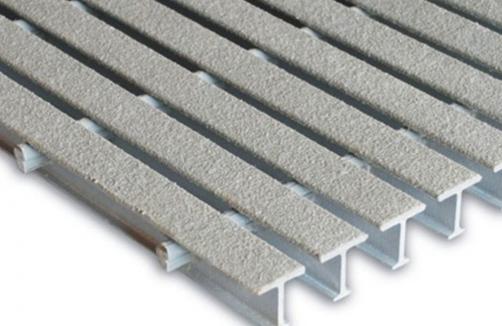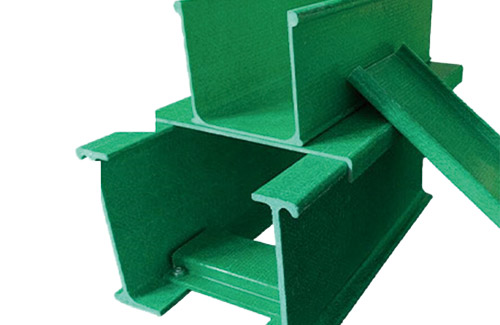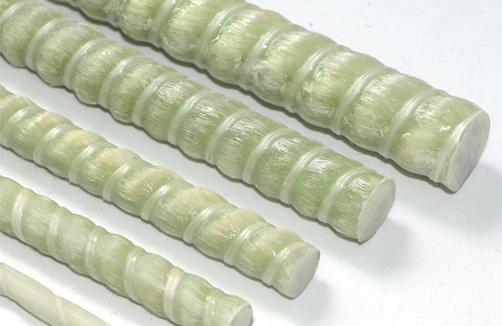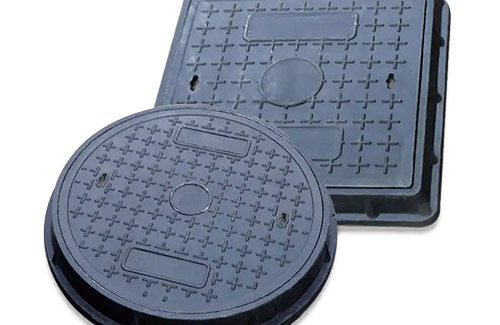There are many types of fiberglass extruded profiles, including fiberglass round tubes, fiberglass square tubes, fiberglass rectangular tubes, fiberglass round rods, and fiberglass I-beams.
Features:
1. Outstanding scale stability
The thermosetting resin matrix undergoes cross-linking during the processing process, forming a network like structure. The product is stable in scale under normal conditions and has little post molding shortening. The shape and scale of the product undergo minimal changes under long-term continuous loading, resulting in minimal creep. Its creep function depends on factors such as the size of the load, temperature fluctuations, and the length of the loading time. Under fixed load and temperature conditions, the creep deformation of thermosetting plastics after long-term loading is much smaller than that of thermoplastic plastics.
2. Superior heat and high temperature resistance characteristics
After curing, thermosetting resin based composite materials can no longer soften. The heat resistance of their products is appropriately stable. When measured under a load of 1.86 MPa, their thermal deformation temperature is generally within 150-260 ℃. Fiber reinforced thermosetting plastics belong to excellent insulation materials, with thermal conductivity generally ranging from 0.35 to 0.47 W/(m.K). As long as the metal is 1/100 to 1/1000, they can be used as excellent insulation materials and instant high-temperature resistance materials. The thermal deformation temperature of the materials can reach 350 ℃, Can be used as both room temperature and high temperature structural data. Fiberglass/phenolic resin is an excellent insulation material for rocket and missile engines.
3. Excellent electrical function
Composite materials are excellent electrical insulation materials. Products made with mica as filler have even better electrical performance and can be used to produce special components with excellent arc resistance, voltage resistance, and induction resistance. Due to the excellent electrical performance of composite materials, their products are free from electrochemical corrosion and stray current corrosion, and can be widely used in the production of insulation components for external surfaces, electric motors, and electrical appliances to improve the reliability of electrical equipment and extend its service life. In addition, the excellent dielectric performance and microwave transmittance of the product under high-frequency effects have been used to produce various high-frequency insulation products such as radar covers.
4. Excellent corrosion resistance
The electrochemical corrosion mechanism of resin based composite materials is different from that of general steel. It is non-conductive and does not dissolve ions in dielectric solutions. Therefore, it has outstanding chemical stability against atmospheric, water, and general concentrations of acid, alkali, salt and other media, especially in non oxidizing strong acids and media with appropriate and wide pH ranges. Therefore, it is now widely used in the production of corrosion-resistant products for the corrosion of certain media that stainless steel cannot resist, such as hydrochloric acid, chlorine gas, carbon dioxide, dilute sulfuric acid, sodium hypochlorite, and sulfur dioxide, and has played an outstanding role.
5. Outstanding surface characteristics of fiberglass extruded profiles
When composite materials are touched with chemical media, there is generally little corrosion or scaling on the surface, so it is commonly used to make fluid pipelines. The internal resistance of the pipeline is very small, the friction coefficient is low, and a lot of power is saved. Because composite materials are generally not as prone to generating metal ion pollution media as metals, this is also the reason why composite material products are widely used in the food and pharmaceutical industry. In addition, composite materials have a high friction (PV) limit value, and under water lubrication conditions, their friction coefficient is very small, about 0.01-0.03, so they are also the preferred materials for wear-resistant products.
The above superior characteristics of pultrusion composite materials are often used in mechanical structural components, insulation components, high-frequency stress components, and other functional structural components.








